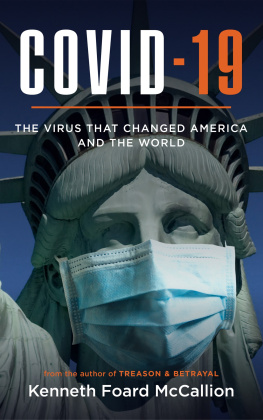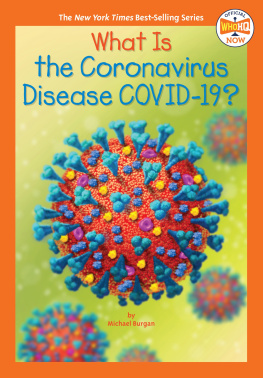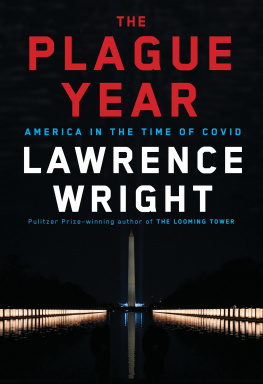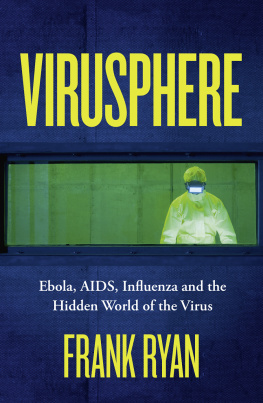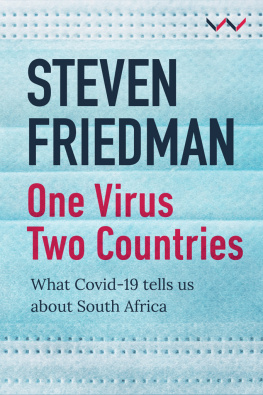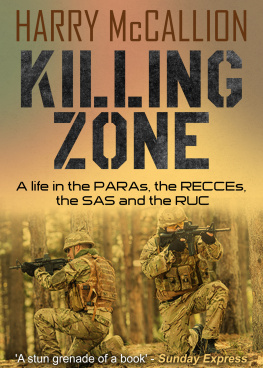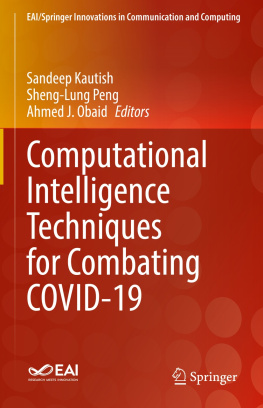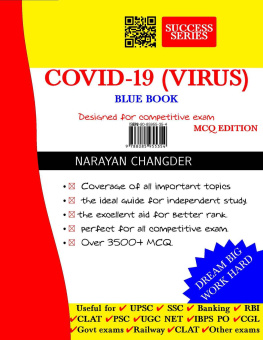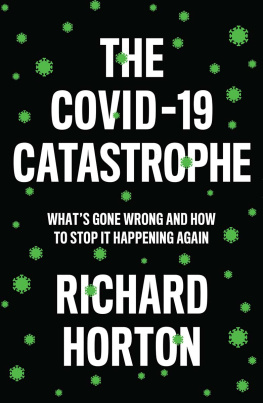To the Essential Workers
This book is dedicated to Vepuka E. Kauari, RN, Katherine Kohari, MD, Ralph Cipriani, MD and all the other essential workers, including but not limited to doctors, physicians assistants, nurses, certified nursing assistants, pharmacists, home health care workers, and emergency medical technicians in the U.S. and around the globe who play critical roles and perform essential functions in the continuing battle against COVID-19. They do so each day at great risk to their own health and their own lives.
It is also for the other essential workers who make it possible for our society to continue to function during this time of crisis, providing us with the food and other necessities of life. These include all those who are part of the long food chain, from the farms to the grocery shelves to the check-ou t counters.
It is also for the mail carriers and other postal employees, UPS, FedEx and other delivery service providers, as well as the bus and truck drivers, railroad and subway workers and other personnel who keep America and the wo rld moving.
It is for the domestic workers and janitorial service workers who help us maintain the high levels of hygiene and cleanliness that is more important than ever in this a ge of COVID.
It is for the rest of our fellow Americans and world citizens who perform essential functions so that the rest of us can continue to live, survive, and hopef ully thrive.
All I can say is thank you, and hope that this book will help America and the world more fully appreciate the value of your services, and to give you the honor and respect you so rich ly deserve.
COVID-19 TIMELINE
2004
A National Intelligence Council Report warns: Some experts believe it is only a matter of time before a new pandemic appears, such as the 1918-1919 influenza virus that killed an estimated 20 million worldwide. It foresees that a pandemic would put a halt to global travel and trade during an extended period, prompting governments to expend enormous resources on overwhelmed heal th sectors.
2017
A Pentagon Plan circulated to Trump administration officials identifies a Novel Influenza Disease as National Threat #1. The plan specifically references coronavirus as a threat, saying that coronavirus infections [are] common around the world, and that an outbreak in a single community can quickly evolve into a multinational health crisis that causes millions to suffer, as well as spark major disruption to every facet of society. It anticipates a scarcity of medical equipment needed to combat the effects of the disease, including ventilators and personal protective equipment, such as face masks and gloves.
May 2018
The White Houses National Security Council Directorate for Global Health Security and Biodefense is disbanded by Trumps NSA Director John Bolton. This global health unit of the National Security Council, which had been established in 2015 following the Ebola pandemic, was designed to mobilize the federal governments resources to prepare for the next pandemic. As a result, when the COVID-19 crisis arrives, there was no clear White House structure or plan in place to oversee this countrys coronavirus response. Several critical weeks are squandered as the Trump White House breaks the cardinal rule in a public health security crisis, which is that speed i s essential.
2019
January
The Office of the Director of National Intelligence (DNI) Worldwide Threat Assessment warns, [t]he United States will remain vulnerable to the next flu pandemic or large-scale outbreak of a contagious disease that could lead to massive rates of death and disability, severely affect the world economy, strain international resources, and increase calls on the United States for support. Not only does the Trump administration ignore this warning, but it also holds up the release of the 2020 report in February 2020, which repeats the same d ire warning.
September
The U.S. Agency for International Developments PREDICT Program , which was strongly backed by both the Bush and Obama administrations, is dismantled by the Trump White House. This program was an essential piece in an emerging global network for infectious-disease surveillance, giving scientists in the U.S. a head start in understanding pathogens that could eventually reach U.S. shores. If PREDICTs field teams had been active and detected the new coronavirus early, American scientists would have been able to begin work on tests, treatments, and cures much earlier. When it was in operation, PREDICT succeeded in collecting more than 100,000 samples and found nearly 1,000 new viruses, including a new E bola virus.
October
The Center for Strategic and International Studies in Washington, D.C. runs a pandemic simulation involving a coronavirus virtually identical to the one that hit the U.S. a couple of months later. The purpose of the exercise was to advise U.S. Cabinet officials and other leaders on how to plan for a pandemic before it struck the country. This simulation predicts around a 3% mortality rate, a virus transmissible before symptoms showed, and highly contagious. One of the exercises most important insights is that early and preventative actions a re critical.
The U.S. Dept. of Health and Human Services (HHSs) Crimson Contagion Report is based on a simulating of an influenza epidemic that spread to the U.S., eventually infecting 110 million Americans, leading to 7.7 million hospitalizations and 586,000 dead. According to this scenario, the hypothetical outbreak began in China and was quickly spread around the world by air travelers. Due to the delay and lack of preparation by the federal government regarding this pandemic, 110 million Americans are estimated to have become infected, leading to 7.7 million hospitalized and 586,000 dead. This HHS Report graphically details how underfunded, underprepared, and inept the federal government would be if confronted with a real life-and-death struggle with a virus for which no treatme nt existed.
November
The National Center for Medical Intelligence (NCMI) , which is part of the Defense Intelligence Agency (DIA), warns in an intelligence report that the spreading coronavirus disease in Wuhan could become a cataclysmic event and that the initial stages of a pandemic were already taking place. The Joint Chiefs of Staff at the Pentagon, the National Security Council, and the White House are briefed on these warnings. This report by U.S. intelligence concludes the Chinese leadership knew the epidemic was already widespread as of late November 2019, and that China was withholding crucial information about the true extent and danger of the crisis.
SARS-CoV-2 (also known as 2019 Novel Coronavirus), which is the virus causing the disease COVID-19, is first identified as spreading in Wuhan and the rest of the Hubei provin ce in China.
December 31
The U.S. Centers for Disease Control and Prevention (CDC) first becomes aware of the virus outbreak in China and begins tracking it.




